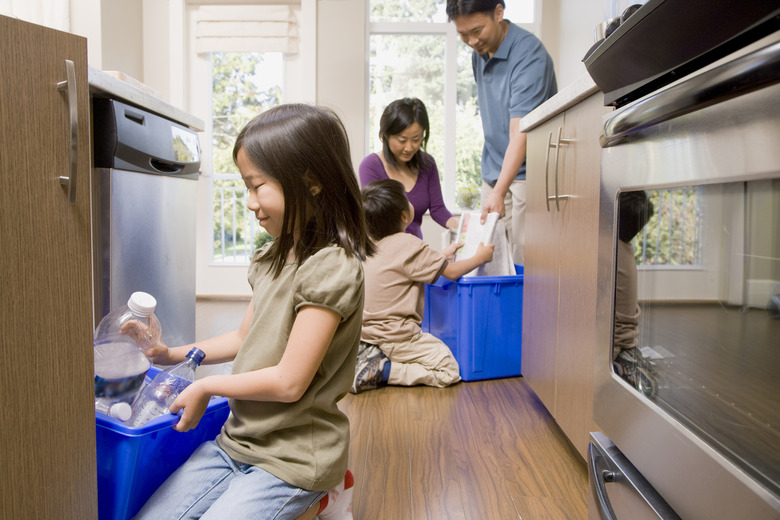Definition Of Going Green
"Going green" is a general term that gets tossed around easily, but have you ever stopped to really think about the "go green" meaning? The phrase incorporates lots of different actions and decisions you make, all with the goal of becoming more environmentally friendly to conserve natural resources and protect the environment. Going green comes into play in many areas around the home, leaving you with plenty of opportunities to help.
Energy Efficiency Green Sustainability Practices
Energy Efficiency Green Sustainability Practices
Look around your home. Most families have gadgets and appliances in every room that consume energy. A big part of the "go green" definition is to reduce your energy consumption by making your home more energy efficient.
One way to increase energy efficiency is to simply reduce how much you use items that require gas or electricity. This can be as simple as shutting off lights when you're not in the room or spending more time outdoors instead of inside using electronics. Adjusting your thermostat by a few degrees can also help. Even strategic use of the dishwasher and washing machine cuts down on energy use.
If you have some money to invest in the process, consider swapping older appliances with newer Energy Star options that are more energy efficient. Adding insulation and sealing any cracks and gaps can improve the energy efficiency of your home.
Reducing Waste and Recycling
Reducing Waste and Recycling
Producing less waste in your home keeps that trash out of landfills, which helps with green sustainability practices. Choosing reusable items instead of disposable items like water bottles, silverware and dishes can drastically reduce the amount of trash you produce. Look at the packaging for things you buy to minimize the amount of package waste it produces. You can also help by holding on to things such as clothes, furniture and electronics for longer instead of replacing them with newer items and tossing out the old items.
Recycling is an earth-friendly way to deal with as much of the trash you generate as possible. Besides the typical plastic, glass, metal and paper recycling you do, look into recycling programs for things like old electronics. Some of your waste can go into a compost bin, which allows it to turn into nutrient-dense, organic material you can use in your garden.
Smart Consumer Choices
Smart Consumer Choices
Before you buy anything, whether it's your weekly groceries or a new car, consider the impact of your purchase. Many of those items generate more waste, use natural resources and have a large carbon footprint. By making thoughtful purchases, you get only what you need without contributing to environmental problems.
Buying in bulk cuts down on packaging and the number of trips you need to make to the store. Paying a little more up front to buy a higher-quality product can save you money with a product that lasts longer, and it keeps items out of the landfill longer. Another way you can help is by using green products made by companies that use green practices and sustainable materials. Buying local not only supports your local economy, but it also cuts down on wasteful shipping packages and pollution created by the shipping process.
When it comes to groceries, consider the source of foods, chemicals used on it and other factors that impact the environment. Cutting back on meat helps, as does buying humanely raised meat when you do purchase it. Local foods shorten the distance from the source to your table, which cuts down on transportation that can affect the environment. Meal prep services that deliver ingredients to your door may sound appealing, but they aren't very eco friendly.
Green Remodeling Decisions
Green Remodeling Decisions
If you have plans to remodel your home, look for ways to go green, particularly with materials you choose. Sustainable building materials such as bamboo and recycled steel help conserve natural resources. Choose materials with low toxicity such as low-VOC paint and flooring materials to minimize off gassing.
You can also help by making smart design decisions that support an eco-friendly lifestyle. For example, design an addition with good cross breezes to cut down on air conditioning use. Smart window placement to maximize sunlight and heat can also help.
While you're remodeling, consider adding renewable energy sources. Adding solar panels is an option to cut your reliance on fossil fuels. Geothermal heating and cooling is another option.
